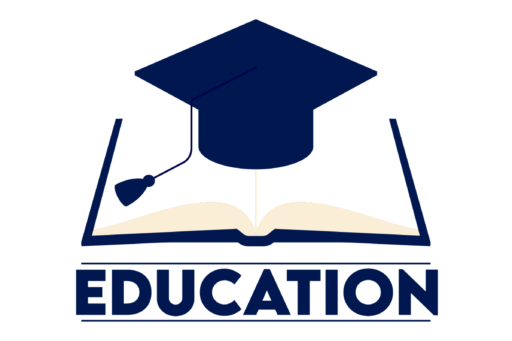Technology in Education In an increasingly digital world, technology has become an integral part of the educational landscape. From online learning platforms to interactive tools, technology is reshaping how educators teach and how students learn. This blog post will explore the multifaceted role of technology in education, its benefits and challenges, and the future of learning in a tech-driven society.
The Evolution of Technology in Education
The integration of technology in education has a rich history, beginning with the introduction of computers in the classroom in the late 20th century. Over the years, we have seen significant advancements, including:
- The Internet and Online Learning
The internet revolutionized education, providing access to a wealth of information and resources. Online learning platforms emerged, enabling students to learn at their own pace and access courses from anywhere in the world. - Interactive Learning Tools
Tools such as smartboards, tablets, and educational apps have transformed traditional teaching methods. These interactive technologies promote engagement and collaboration, making learning more dynamic and enjoyable. - Artificial Intelligence and Adaptive Learning
Recent advancements in artificial intelligence (AI) have led to the development of adaptive learning technologies that tailor educational experiences to individual student needs, allowing for personalized learning paths.
Benefits of Technology in Education
- Enhanced Accessibility
Technology has made education more accessible to a diverse range of learners. Students with disabilities can benefit from assistive technologies that cater to their specific needs, enabling them to participate fully in the learning process. - Personalized Learning Experiences
With the help of technology, educators can provide customized learning experiences that cater to individual strengths and weaknesses. Adaptive learning systems can analyze student performance and adjust the curriculum accordingly. - Increased Engagement and Motivation
Interactive tools and gamified learning experiences can enhance student engagement. By incorporating technology into lessons, educators can create a more stimulating environment that motivates students to participate actively in their learning. - Collaboration and Communication
Technology facilitates collaboration among students and teachers, regardless of geographical barriers. Tools such as video conferencing, discussion boards, and collaborative documents allow for seamless communication and teamwork. - Access to Resources and Information
The internet offers an abundance of educational resources, including online libraries, tutorials, and courses. Students can explore topics in depth and access materials that may not be available in traditional textbooks.

Challenges of Technology in Education
While the benefits of technology in education are significant, several challenges must be addressed:
- Digital Divide
Access to technology varies widely among students, often creating disparities in educational opportunities. Students from low-income families may lack access to devices or reliable internet, hindering their ability to engage in digital learning. - Overreliance on Technology
There is a risk that educators and students may become overly reliant on technology, potentially diminishing critical thinking and problem-solving skills. Striking a balance between traditional teaching methods and technology is essential. - Privacy and Security Concerns
The use of technology in education raises concerns about student privacy and data security. Schools must implement robust policies and practices to protect student information while using digital tools. - Professional Development for Educators
Teachers may require ongoing training to effectively integrate technology into their teaching practices. Professional development programs must be tailored to equip educators with the skills needed to navigate and leverage new technologies.
Best Practices for Integrating Technology in Education
- Set Clear Learning Objectives
When incorporating technology into the classroom, it’s essential to establish clear learning objectives. This ensures that technology serves as a tool to enhance learning rather than a distraction. - Choose the Right Tools
Selecting appropriate technology tools that align with the curriculum and meet the needs of students is crucial. Educators should evaluate tools based on usability, effectiveness, and accessibility. - Encourage Collaboration
Promote collaborative learning by using technology that fosters teamwork. Group projects and discussions can be enhanced through online platforms that facilitate communication and idea sharing. - Monitor and Assess
Continuously assess the effectiveness of technology integration in the classroom. Gathering feedback from students and analyzing learning outcomes can help educators make informed adjustments. - Promote Digital Citizenship
Educators should teach students about responsible technology use, including digital citizenship, online safety, and ethical behavior. Preparing students to navigate the digital world is essential for their future success.
The Future of Technology in Education
The future of education is undoubtedly intertwined with technology. Emerging trends such as virtual reality (VR), augmented reality (AR), and artificial intelligence will continue to shape how we teach and learn. These technologies hold the potential to create immersive learning experiences, allowing students to explore complex concepts in engaging ways.
Moreover, the ongoing development of online learning platforms will make education more flexible and accessible. As we embrace these advancements, it’s essential to maintain a student-centered approach that prioritizes the needs and well-being of learners.

Conclusion
Technology has the power to transform education, making learning more accessible, engaging, and personalized. While challenges remain, the potential benefits of integrating technology into educational practices are vast. By embracing these innovations thoughtfully and responsibly, we can create a more inclusive and effective learning environment for all students.
As we move forward, it is vital to foster collaboration among educators, students, and families to ensure that technology serves as a bridge to a brighter future in education. This blog aims to encourage dialogue and exploration of the exciting possibilities that technology offers in shaping the future of learning.

